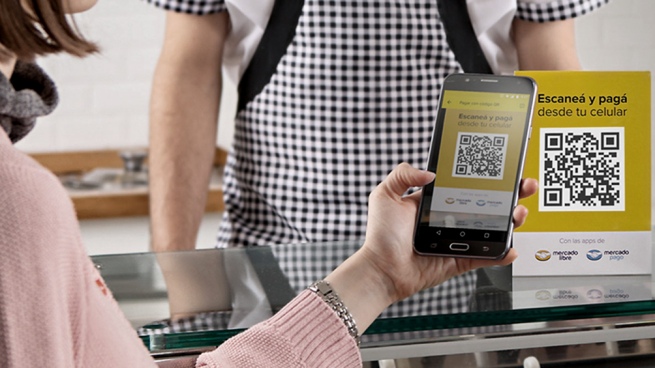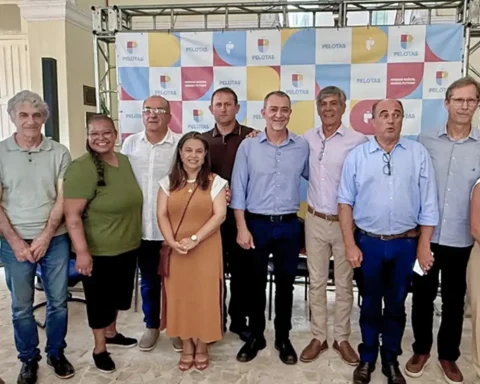Payments with interoperable QR codes exceeded 63,000 daily operations on average, almost triple (+178%) than when the Transfers 3.0 system came into force on November 29, and already imply a monthly movement of about $1,500 millionalthough actors in the sector and the Central Bank (BCRA) itself are confident that this is only the beginning of growth that will be consolidated in the coming months.
Ease of use for daily transactions, adoption by younger generations and competitiveness against cash, both in speed of receipt of money and low operating costs, are the pillars of a system that excites companies and the regulator to see transfer payments as a mechanism with high potential in the near future.
In this sense, the average number of interoperable QR payment operations -that is, between a virtual wallet of one company and a QR code of a different one- they went from 22,586 on the first day of full entry into force of the system to an average of 63,000 in the last days of Marchwhich implies an increase of 178% in just four months, according to data from the BCRA.
“Although transfer payments with the reading of QR codes through a cell phone camera have, for now, a volume that exceeds those made with debit cards, we believe that it has an upward trajectory without a doubt, for the convenience of making payments from a cell phone and the generational issue,” he assured Matías Gutiérrez Girault, Manager of Payment Systems of the Central Bank.
Currently the average ticket for these operations is “around 2,000 pesos” while the monthly billing for this type of operation “is about 1,500 million pesos.”
“The trend is upward and we are convinced that it will continue to increase, although we are still in the first months of its implementation,” Girault said in a presentation by the Argentine Chamber of Fintech on the evolution of the Transfer 3.0 system.
Transfers 3.0 is an open and universal digital payment mechanism that facilitates access to digital payments through any smartphone that, with the download of a virtual wallet (Mercado Pago, Ualá, Iudu, Bimo, Naranja X, TAP or Yacaré) or banking (BNA+, DNI Account, Ank, BBVA Goamong others) that reads QR codes, allows payments to be made with transfers both from bank accounts with CBU and from payment service provider accounts with CVU.
Its objective is to reduce the use of cash and allow payments to be made through cell phones, without the need for a debit card.
“After November 29 we saw dizzying growth,” said Agustín Onagoity, director of Mercado Pago, who stressed that although medium or small businesses do not have the degree of familiarity with the system that the largest ones have -pharmacy chains , supermarkets or service stations – their metrics show knowledge “between 75 and 80 percent”.
In this regard, he pointed out that in recent weeks the number of small and medium-sized businesses has grown consistently “as a result of the news or hearing about interoperability, they ask about how to apply that to their business and how to charge.”
“We see provinces like Formosa where usability multiplied by six, or Santa Cruz where it increased by four. Although it was coming from less developed levels, we see how all this conversation is driving the system,” he stressed.
Another company in the sector is ANK, fintech that integrates the Banco Itaú groupwhich grew strongly in recent months from offering immediate refunds to users and promotions with large pharmacy chains and fast food outlets, as well as dissemination campaigns among influencers on social networks.
“Currently, about 40% of operations with ANK are interoperable, with an average of two trades per user per weekwhich is a very high number compared to those we saw at the beginning”, explained Gustavo Tokashiki, Vice President of Risks at ANK. One of the hurdles to overcome, she said, is the low level of knowledge from the operability side
“Although it is less and less, there is a lack of knowledge of whether a QR can be used with a different wallet,” admitted Tokashiki.
Today there are more than 60 companies participating in the system: three administrators (Coelsa, Prisma and Red Link), 15 acceptors and 16 payment applications, although there are almost 40 that are taking steps to join both as payment acceptors and as wallets.
With this system, merchants receive the money in their accounts in less than 15 seconds irrevocably – a 10-second buff from when it was cast – and with the lowest commission in the market (from 0.6 to 0.8%), which simplifies operations and allows it to compete against cash, which is the form of payment used in about 8 out of 10 transactions.
“The fact that it is simple and immediate makes it useful for both merchants and payers. It is for that population that has always been condemned to use cash,” he said. Maia Eliscovich, director of Ualá BISfor which he said that “it is very important that interoperability is understood and that it can be used everywhere and with any wallet”.
However, he said that “usability needs to be refined a bit so that it becomes easier” since not all operations are completed correctly and “the consumer experience must end with successful payments if we want this to work.”
Transfers 3.0 means a resounding improvement over other electronic payment methods such as those made with a debit card, which are credited within 24 hours, or with a credit card, which are credited within 8 to 18 business days, depending on the size of the company that receives the money (if is micro or small it will be in 8 days, if it is medium in 10 and if it is large 18 working days).















